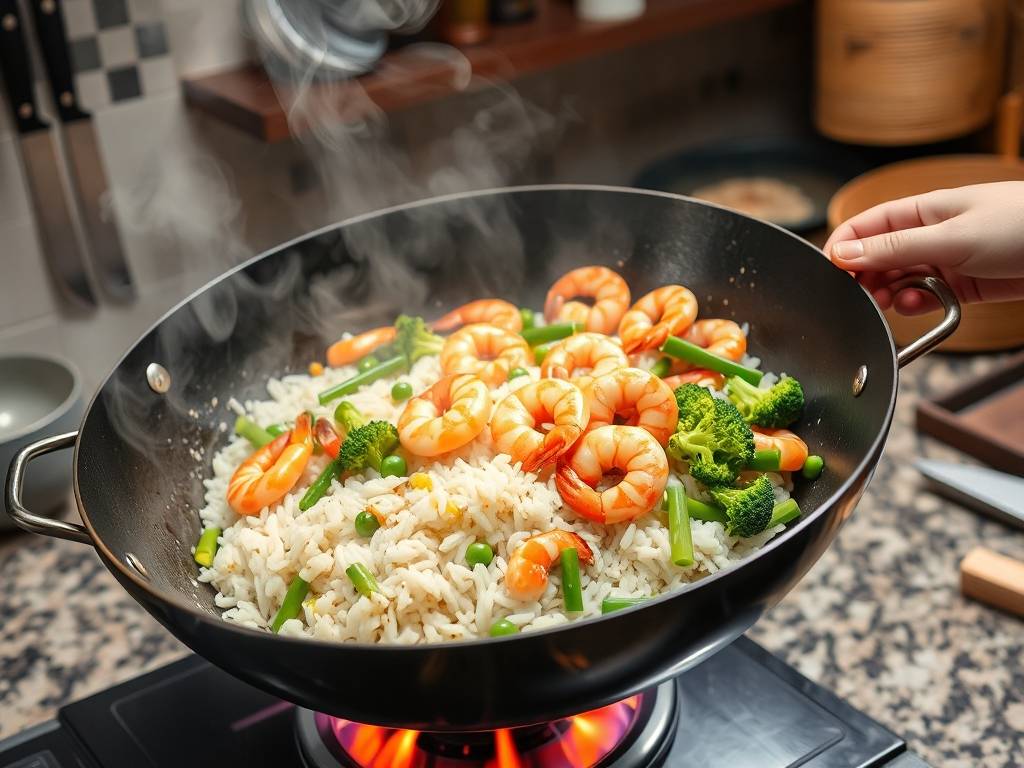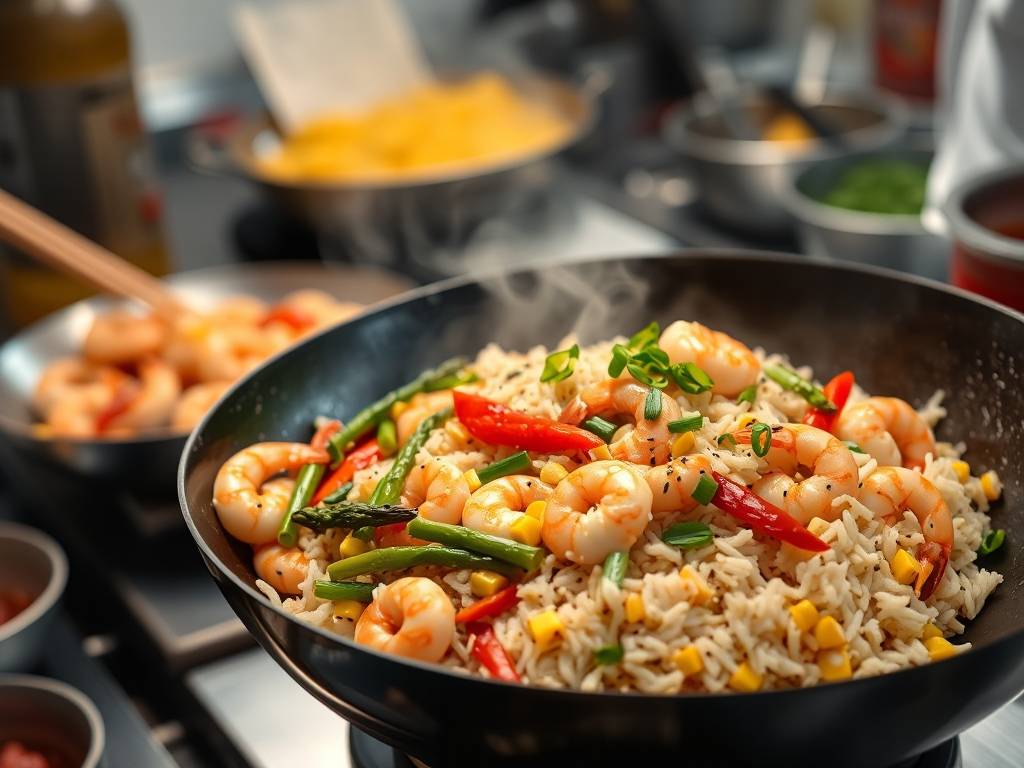The Ultimate Guide to Making Perfect Shrimp Fried Rice with Egg and Veggies
Fried rice is a beloved staple in many households worldwide, but few dishes achieve the perfect balance of flavors and textures quite like shrimp fried rice with egg and vegetables. This classic Asian-inspired dish combines succulent shrimp, fluffy eggs, and crisp vegetables with fragrant rice to create a meal that's both satisfying and nutritious. Whether you're a novice cook or an experienced chef, mastering this dish will elevate your culinary repertoire. Let's dive into the art of creating the perfect shrimp fried rice.
Understanding the Foundation: Quality Ingredients
The secret to exceptional fried rice begins with selecting premium ingredients. Each component plays a crucial role in the final dish, so never compromise on quality.
For the shrimp, choose medium-sized, fresh or properly thawed shrimp. Look for firm, translucent flesh with a mild sea aroma. Peel and devein them, leaving the tails on or off according to your preference. Pat them dry thoroughly - this ensures they'll sear properly rather than steam in the pan.

The rice choice is critical. Day-old, cold jasmine rice works best as its slightly dried-out texture prevents mushiness. If using freshly cooked rice, spread it on a baking sheet and refrigerate for at least two hours. The grains should separate easily without clumping.
Select vegetables that provide color, crunch, and flavor. Classic choices include diced carrots, peas, corn, and finely chopped scallions. For added depth, consider including diced bell peppers, water chestnuts, or bamboo shoots. Always cut vegetables uniformly for even cooking.
Eggs should be fresh and preferably at room temperature. Beat them lightly with a pinch of salt and a teaspoon of water - this creates fluffier scrambled eggs.
Essential Equipment and Preparation
Proper tools make the cooking process smoother. You'll need:
- A large wok or heavy-bottomed skillet
- A sharp chef's knife
- Measuring spoons and cups
- Wooden spatula or wok spatula
Before you start cooking, practice "mise en place" - French for "everything in its place." Have all ingredients measured, chopped, and within reach. Fried rice cooks quickly, so there's no time to search for ingredients once you begin.
Step-by-Step Cooking Process
Step 1: Marinate the Shrimp In a small bowl, combine shrimp with one teaspoon of soy sauce, half teaspoon of sesame oil, and a pinch of white pepper. Let it marinate for 10-15 minutes while you prepare other ingredients.
Step 2: Scramble the Eggs Heat one tablespoon of vegetable oil in your wok over medium heat. Pour in beaten eggs and let them set slightly before gently pushing them toward the center with your spatula. Cook until softly set, then remove from the wok immediately to prevent overcooking.

Step 3: Cook the Shrimp Increase heat to medium-high and add another tablespoon of oil. Add shrimp in a single layer and cook for 1-2 minutes per side until they turn pink and opaque. Remove from the wok and set aside with the eggs.
Step 4: Sauté Aromatics and Vegetables Add remaining oil to the hot wok. Add minced garlic and ginger, stirring for 15 seconds until fragrant. Add harder vegetables like carrots first, stir-frying for 2 minutes before adding softer vegetables like peas. Cook until vegetables are tender-crisp.
Step 5: Combine Everything Add cold rice to the wok, breaking up any clumps. Stir-fry for 2-3 minutes until rice is heated through. Create a well in the center and return eggs and shrimp to the wok. Add soy sauce, oyster sauce (if using), and white pepper. Toss everything together until well combined.
Step 6: Final Touches Add chopped scallions and a drizzle of sesame oil. Taste and adjust seasoning if necessary. Serve immediately while hot.
Pro Tips for Restaurant-Quality Results
-
High Heat is Key: Fried rice requires high heat to achieve that characteristic "wok hei" or breath of the wok - the slightly smoky flavor that defines great stir-fry.
-
Don't Overcrowd the Wok: Cook in batches if necessary. Overcrowding lowers the temperature and causes ingredients to steam rather than fry.
-
Season in Layers: Season the shrimp, eggs, and rice separately to ensure even flavor distribution.
-
Oil Temperature: The oil should shimmer but not smoke when ingredients are added. If it smokes, it's too hot; if it doesn't shimmer, it's not hot enough.
-
The Right Motion: Use a scooping and flipping motion rather than stirring to combine ingredients. This prevents breaking the rice grains.
Customization and Variations
The beauty of fried rice lies in its adaptability. For a vegetarian version, substitute shrimp with tofu or additional vegetables. For extra protein, add diced chicken or pork. Spice lovers can add chili oil or fresh chopped chilies. For a different flavor profile, try using coconut amino instead of soy sauce or adding a tablespoon of curry powder.
Pairing Suggestions
Shrimp fried rice makes a complete meal on its own, but it pairs wonderfully with:
- Egg drop soup or hot and sour soup
- Steamed dumplings or spring rolls
- A simple cucumber salad
- For drinks, consider green tea, jasmine tea, or a light lager beer
Storage and Reheating
Leftover fried rice keeps well in an airtight container in the refrigerator for up to 3 days. To reheat, use a skillet over medium heat with a teaspoon of oil. Microwave reheating tends to make the rice mushy. Never leave cooked rice at room temperature for more than two hours to prevent bacterial growth.
The Cultural Significance
Fried rice has a rich history dating back to the Sui Dynasty in China. It originated as a way to use leftover rice, transforming it into a new delicious meal. The addition of shrimp represents prosperity in Chinese culture, making shrimp fried rice a popular dish during celebrations and festivals.
Mastering shrimp fried rice with egg and vegetables gives you not just a delicious meal, but a connection to culinary traditions spanning centuries. With practice, you'll develop your own signature version of this classic dish that will impress family and friends alike. Remember, great cooking isn't about rigidly following recipes - it's about understanding techniques and adapting them to create something uniquely yours.






发表评论